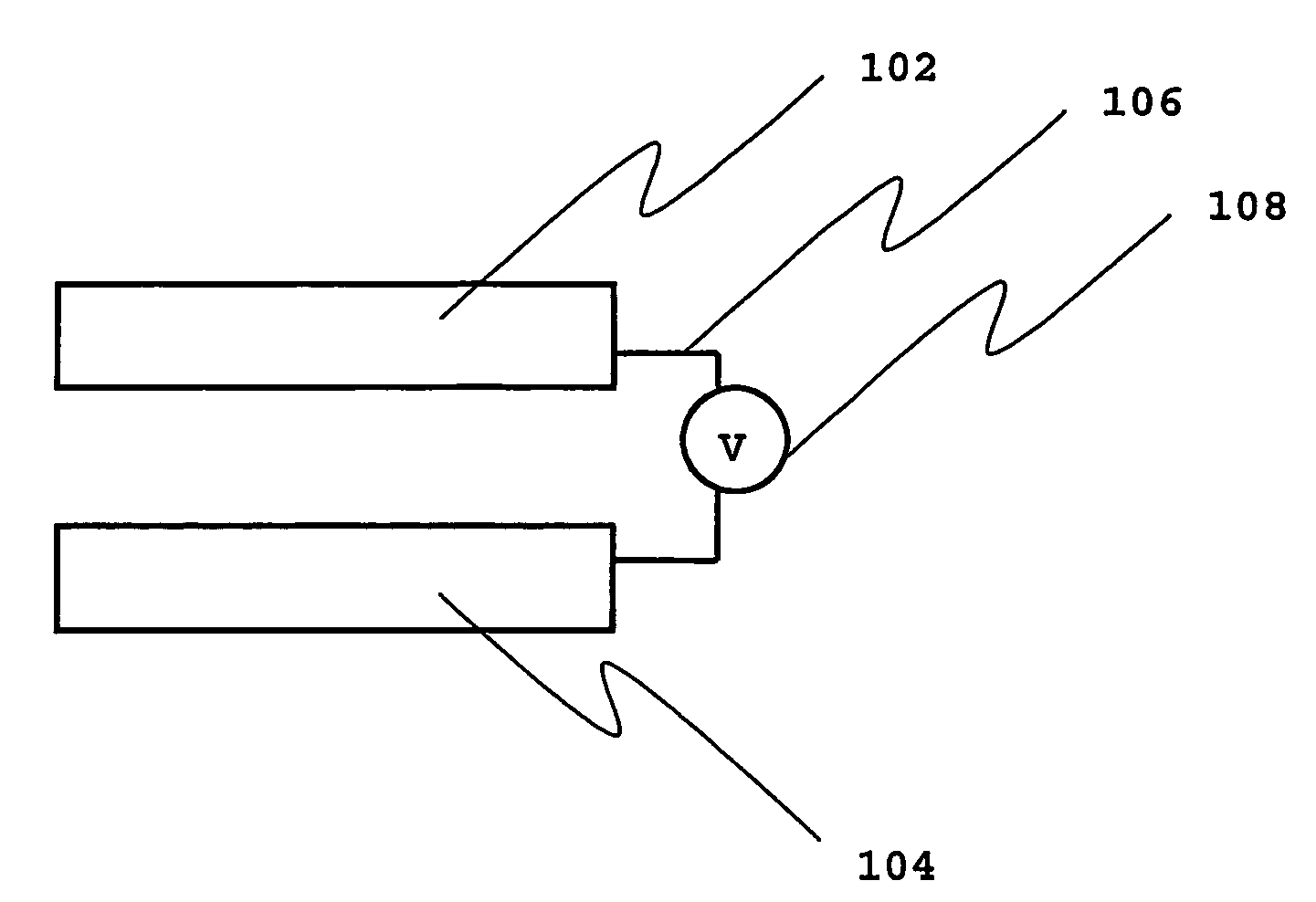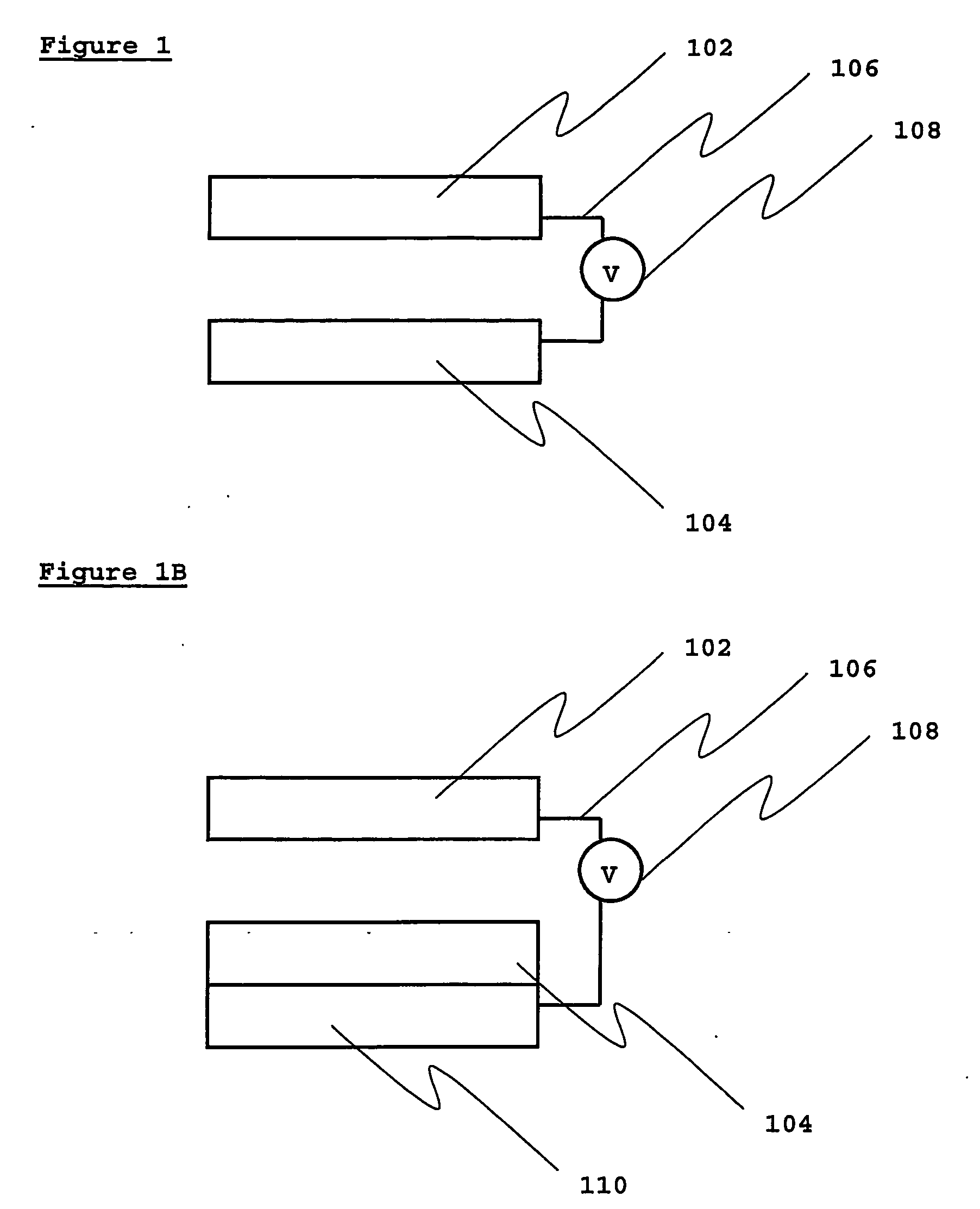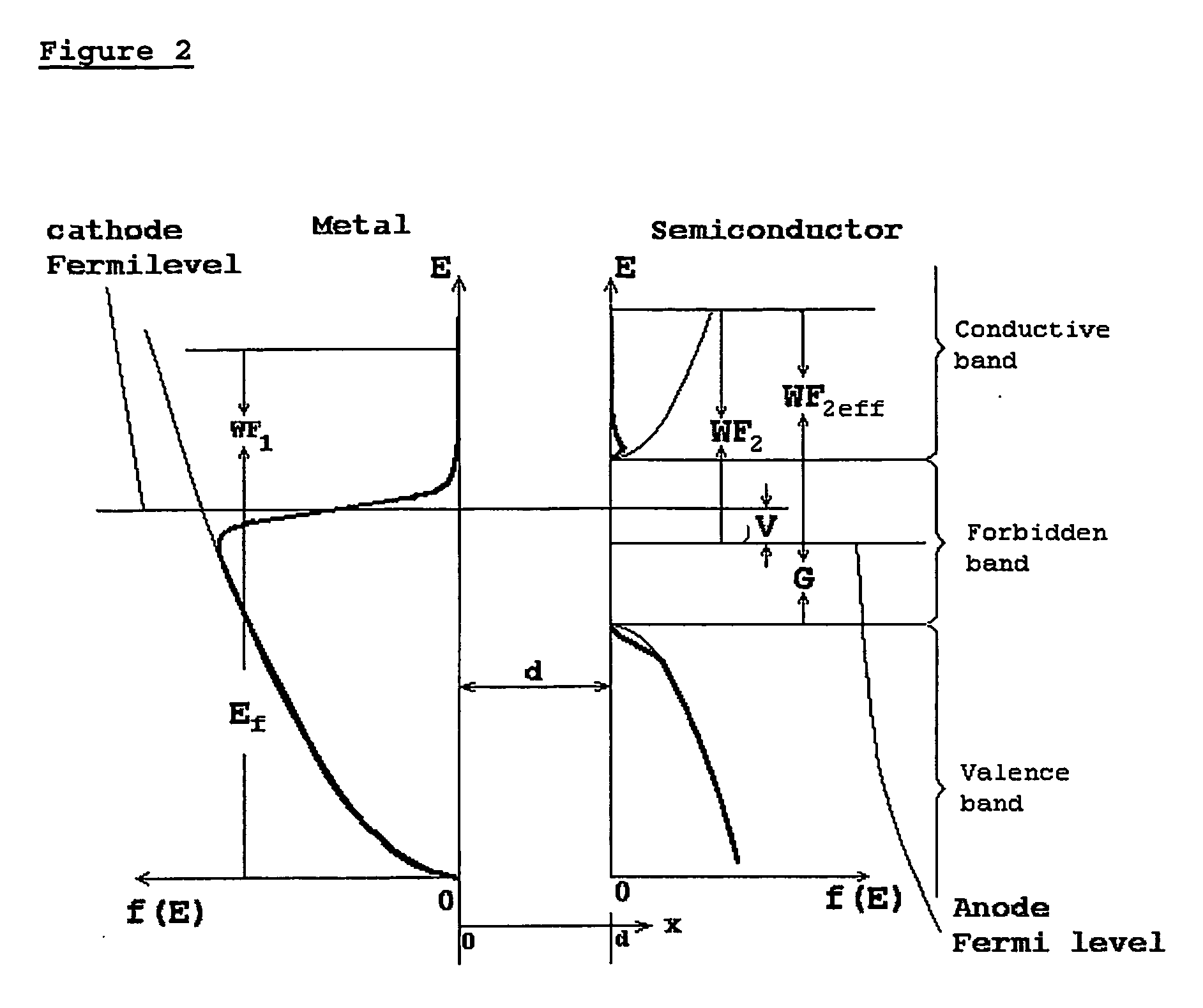Tunneling gap diodes
a technology of gap diodes and tunnel diodes, which is applied in the direction of diodes, semiconductor devices, electrical apparatus, etc., can solve the problems of imposing additional technological difficulties, 1% or less, and insufficient material availability, etc., to achieve the effect of increasing the efficiency of heat pumping or power generation, increasing energy, and increasing the efficiency of tunnel diodes
- Summary
- Abstract
- Description
- Claims
- Application Information
AI Technical Summary
Benefits of technology
Problems solved by technology
Method used
Image
Examples
example
[0032] In one embodiment, pure Ge is the semiconductor. It has G=0.75 eV, and G / 2=0.375 eV, a little more than optimum WF for thermionic diode for Tc=300 K (˜0.33 eV). Even at room temperature, Ge has electron concentration in conductive band ˜1013 cm−3, which is sufficient for electrical conductivity for thin layer. If it is assumed that electrodes are treated by Cs and O2 and has WF1=WF2=1 eV, then the output parameters for cooling with d=2.5 nm, Tc=300 K, Th=350 K are given below:
j,Qc,W,hcool / hcoolV, VA / cm2W / cm2W / cm2COPhcoolCarnot0.101.760.630.1773.560.780.91 0.146.822.220.7962.32 0.6990.8160.2036.69.707.3151.320.570.665
Here j is resulting diode current, Qc cooling power, W = j*V = spent power.
[0033] Calculations were fulfilled with some simplifications as follows.
[0034] For elementary tunnel current from emitter, which is produced by electrons of the metal conductive band with energy interval E, E+dE and with energy Ex, Ex+dEx in direction normal to the emitted surface, we u...
PUM
 Login to View More
Login to View More Abstract
Description
Claims
Application Information
 Login to View More
Login to View More - R&D
- Intellectual Property
- Life Sciences
- Materials
- Tech Scout
- Unparalleled Data Quality
- Higher Quality Content
- 60% Fewer Hallucinations
Browse by: Latest US Patents, China's latest patents, Technical Efficacy Thesaurus, Application Domain, Technology Topic, Popular Technical Reports.
© 2025 PatSnap. All rights reserved.Legal|Privacy policy|Modern Slavery Act Transparency Statement|Sitemap|About US| Contact US: help@patsnap.com



